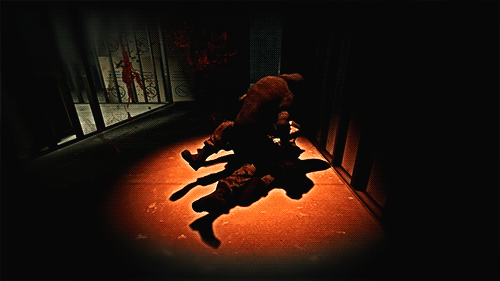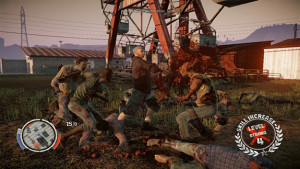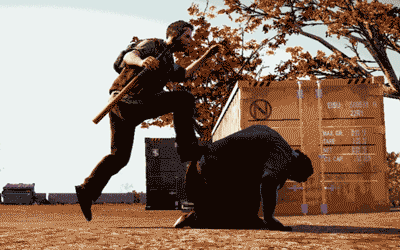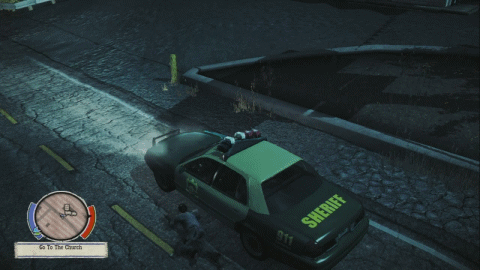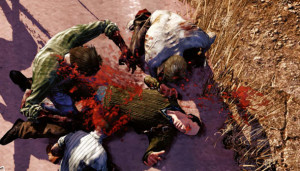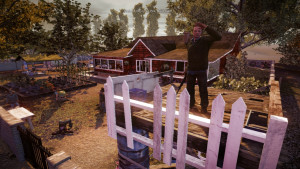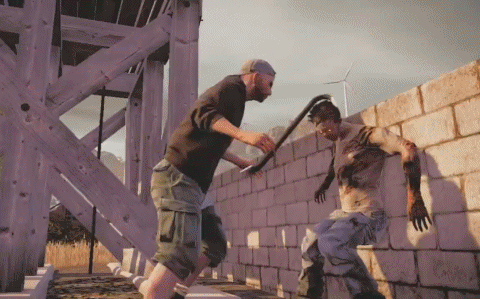By the fall season of 2008, I had been a Microsoft “Xbox 360” owner for barely six months. And during that time I had the opportunity to play some open world games (“Grand Theft Auto IV” and “Saint’s Row” to be precise), dove into an even more beautifully rendered boxing ring with “Fight Night Round 3”, and had the chance to race around the world in “Forza”. But all of the games mentioned had a certain level of expectation to them that would make the experience either better or worse depending on the game’s quality.
But then there came a game where I, like many others who weren’t involved in the process of making, marketing and reviewing it, had no expectations for whatsoever, “Left 4 Dead”. The game threw a group of characters (controlled by up to four humans) in a world that had been turned upside thanks to a zombie outbreak. The action-packed co-op experience became a smash hit and turned into a genuine system seller for Microsoft.
“Left 4 Dead” spawned a sequel and a new wave of zombie oriented multiplayer action that made gamers either grow more excited or more tired with each game coming down the pike. No matter what side you were own in this argument about the genre’s quality, everyone and their mother questioned how much further could creators go in creating the “end of the world” experience. There was a group of game developers who understood one of biggest flaws in the genre didn’t center on the zombies themselves, but the human instinct when it comes to survival. That set of developers was “Undead Labs” and their first creation, the Xbox exclusive “State of Decay”. And after hearing so many positive things about this latest ride through a zombified world, I was pumped to see if it could be a nauseating good time, or clinically brain dead.
Did I Complete “State of Decay”
Originally titled “Class 3”, Undead Labs released “State of Decay” with the idea in mind that killing zombies can only be fun for so long. What if the player was given the chance to control a growing group of survivors in the quest to, well, survive. The game features a plethora of survivors that are mostly playable and can grow in several key areas from cardio to fighting abilities; with the latter giving each specific character the chance to master a certain trait or weapon (like being able to focus aim and slow down time while picking off zombies).
But there are more than simple RPG elements added to the game to make it feel more than just some zombie-slaying experience. Probably the biggest draw to “State of Decay” is the ability to create a fortified sanctum. Depending on what location chosen to move the community, the player must collect items to build up “zed” (“zombie dead”) defenses and make sure community members are safe, healthy and progressing in their skills to help them thrive on the battlefield.
Thankfully there’s actually a story to the game that makes it go beyond just smashing, collecting and building. Though the tale isn’t revolutionary or emotionally gripping, it forces the player to never get too comfortable in one setting; causing them to venture out and explore the relatively large towns that make up “Trumbull Valley”.
There is so much to gather and search through that it’s very hard to see everything in one play through. Thanks to the story’s “time limit” and resources that don’t reappear after one scavenges an area, the player will be left with no choice but to complete the story unless they want everything they’ve worked so hard to build slowly wither away. And I refused to let that happen to my community of hard-nosed zed killers.
Did “State of Decay” Live Up to the Hype?
Like many entertainment mediums, video games has become greatly associated with the living dead walking around virtual worlds, ravaging and slaughtering any human that comes within reaching distance. But never before had a console game asked the player to focus less on bashing zed heads, and more about survival through fortification and human alliances than “State of Decay” – and that’s what makes the experience stand out so much. As partially noted above, the player is given three main areas to find resources that you take back to your temporary home in hopes of making it a stronghold. The process of going out alone or with a buddy (virtual, not real as the game has no multiplayer function – though it would be a perfect two-player experience) to search potentially zombie infested areas for that small cache of medicine or construction materials can be incredibly tense, yet fun thanks to the ability to obliterate a skull with the player’s trusty sledgehammer if you can get the jump on any potential danger.
The gameplay is relatively functional. The character the player utilizes can run out of breath if he/she runs too long, repeatedly swings a weapon without pausing between attempted strikes, or is encumbered by the amount of items stuffed into their backpack. Driving features a unique option of opening the driver’s side door when moving, giving the player a chance to kill incoming enemies without stopping a la the movie “Zombieland”. But don’t think those doors can’t come flying off at a moment’s notice.
Another positive about the game is its level of difficulty. No matter how tough and buff characters are, no matter how fortified a shelter is, there’s always a genuine feeling of danger looming. Not only do enemies vary from regular zeds to gigantic, overall-wearing behemoths, they also form formidable hordes that can overwhelm a well-armed army in a single bound. Oh, and if a character dies … they die forever! While that might come across as a flaw, it definitely adds to the sense of dread that could befall any character while encouraging players to work with a variety of characters rather than sticking with just one person. It’s the perfect blend of enjoyable and challenging.
There are problems, though … very noticeable problems. First there is the graphics. While not an issue with yours truly, others have been immediately turned off by the game’s dated appearance. And for those who would like to think otherwise, no, it never gets better looking. But great graphics don’t make the game. When reviewing about the gameplay the word “relatively” was used to describe “State of Decay’s” core system. “Decay” can be really rough around the edges featuring glitches both weird and frustrating. From the usual enemies clipping through walls to characters going mute during cut scenes, minor occurrences can pale in comparison to moments like headless zeds coming back to life and your car doing a complete 180 degree spin before rolling and wrecking in midair simply because you were driving away from a horde.
Then there’s the fort building. Though the game does a good job explaining to you the basics of combat, item researching (including making sounds while scavenging) and general survival tactics, it lets the player’s hand go during those crucial hours of building your initial base. The first few hours to days will undoubtedly be an effort of trial & error for someone uneducated on all of the information being thrown at the player about what you need to build, how certain items work and what character can’t handle the pressure of this decaying world. Though time softens the frustration, the initial hours can be incredibly daunting.
There’s also no stopping the game, literally. The world of “State of Decay” continues even after the system has been turned off. Don’t play it for a few days and a player will come back to find materials used, moral levels lower or higher than when they turned the game off (more than likely lower) and a survivor or two no longer among the living. The idea of a true living world is fantastic, but plans can easily go awry if someone isn’t playing the game almost all of the time. And even when everything is going well, situations can get redundant after a while (especially when the player, unknowingly, starts coming closer to an ending that will ultimately divide players until the sequel). The game is truly imperfect, but goes beyond what many believed was possible in the genre.
Should You Play “State of Decay”
Yes, the game does have so-so graphics, can get repetitive, be overbearing and glitchey at times, but “State of Decay” is too much fun not to enjoy on a primal level of bashing zombies in the head, blowing them up or literally running them over until they are nothing more than road kill prone to lure other zombies for a little petrol barbeque. But what makes the game stand the test of time is its community creation and the chance for a player to thrive where no one else could.
The base game is highly recommended for anyone with an Xbox 360 or One. And if you enjoy the building/survival aspects of the original, pick up the downloadable content (DLC) “Breakdown” as well. On the other end of the DLC spectrum is “Lifeline” which produces a completely different setting, more weapons and ammo, better trained starting characters, and, sadly, quite a few glitches that can cause characters to be overwhelmed by a horde of wall-phasing zeds. “Lifeline” still gets a solid recommendation, but might be just as, if not more frustrating thanks to the glitches than its predecessors. (Both DLC come pre-packaged with the Xbox One version)


